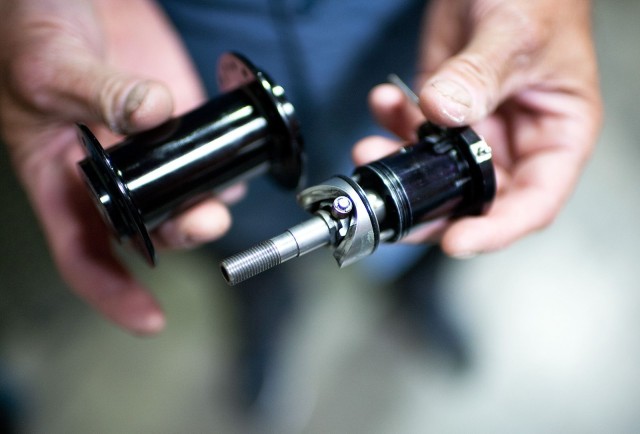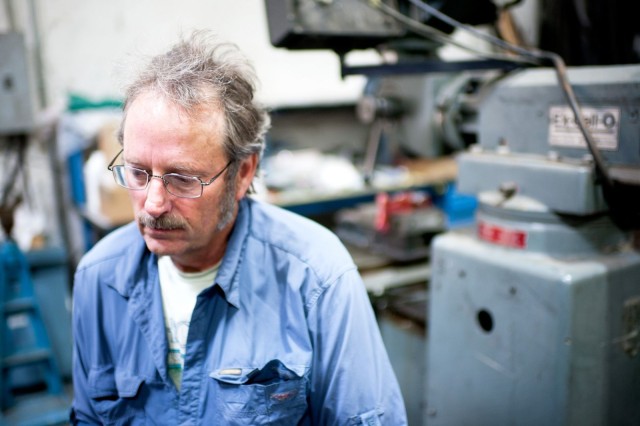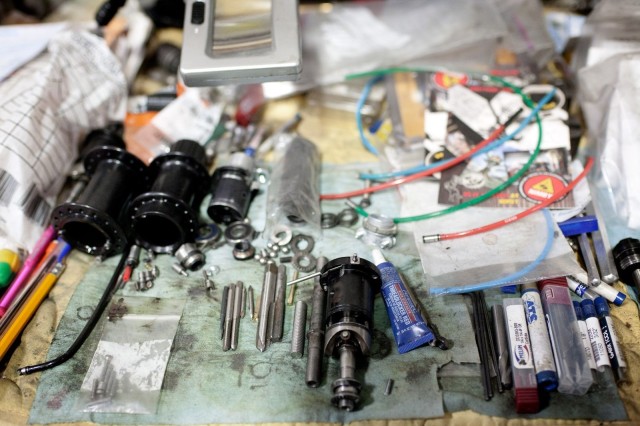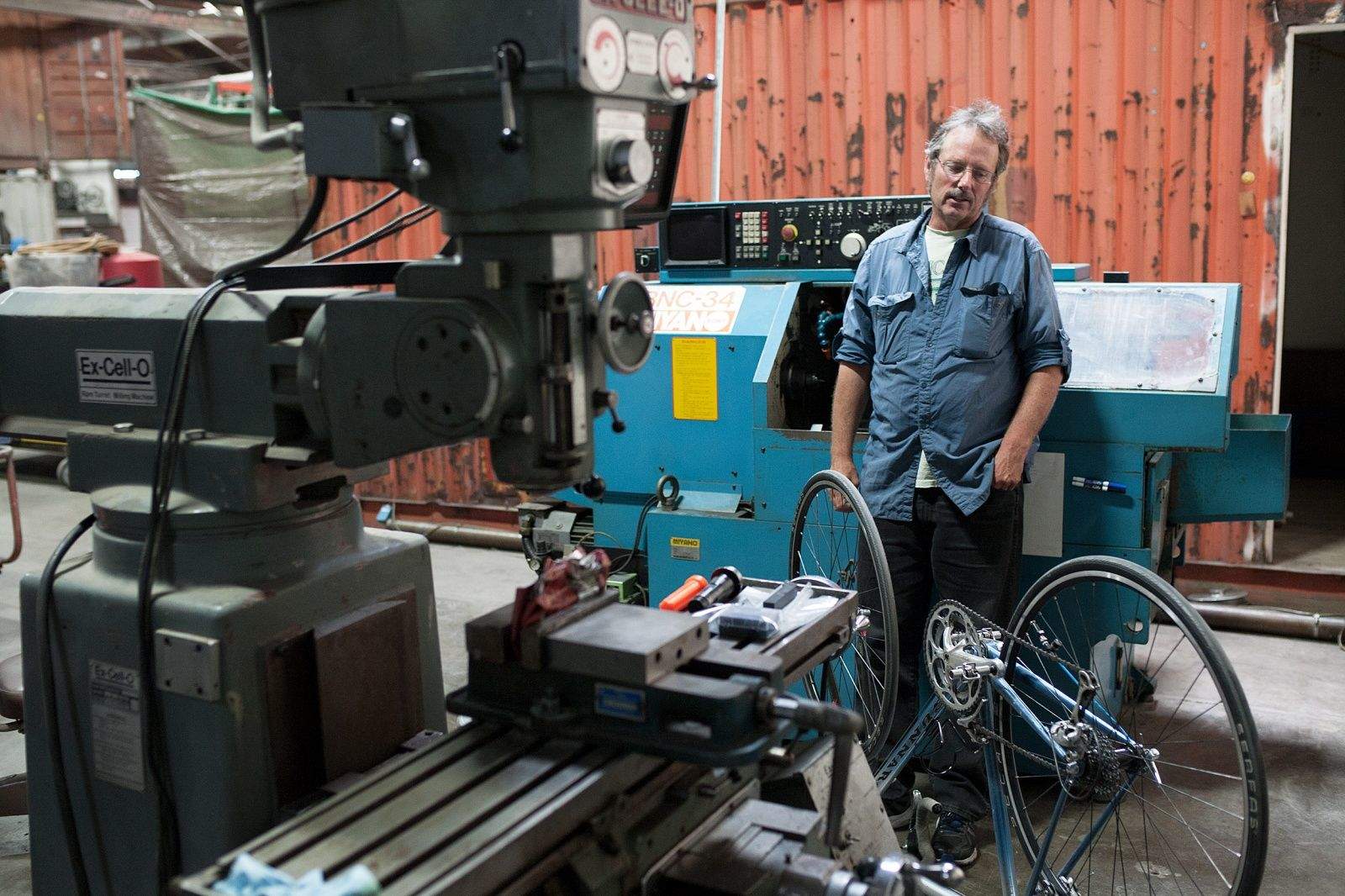SAN FRANCISCO — Sometimes even a great idea falls flat at first. Take Pump-Hub, a self-inflating bike tire gizmo. It was rolling along at trade shows and getting lots of good press before the financial crisis of 2008 sidelined the project.
Now its creator, engineer Kevin Manning, is getting back on track with a new team behind him and plans to expand his original idea — an automatic, adjustable, tire-inflation system housed in the hub of a bike wheel.
For cyclists, the Pump-Hub means no remembering to check the tire pressure or pack a pump, no fiddling around with the valve and then racing to put the cap back on before the air wheezes out and your aching arms have to start all over again. It inflates the tires to the proper pressure while you ride, making a gentle clickety-clack sound reminiscent of spoke cards from childhood days. When the tire hits the designated pressure, the fluttering sounds stop. If you get a flat, just upend your bike and spin the wheel until pressure is restored.
“It’s like how using a Macintosh is easier than using a command-line interface,” Manning says, turning his Gunnar bike upside down on the Embarcadero to show me how the Pump-Hub works. If you really boil down all the technology behind his invention, he adds, the main advantage basically ends up being “it’s easier.”

There are some pluses to Manning getting back in the saddle now with Pump-Hub. When the economy tanked, more people started biking. The number of people who bike to work has doubled since 2008, according to the U.S. Census Bureau. Bike sales are also on the rise, with transit and fitness bikes up 15 percent, but customers are cost-conscious, spending about 3 percent less per bike.
Manning, a wiry member of the Oakland Yellowjackets bike club who chauffeurs tourists around by pedicab three days a week in San Francisco, hasn’t set a price for the Pump-Hub yet. But he recognizes that cost is crucial to the product he hopes to have on the market in a few months.
“The lower we can price it, the more of a general-market product it is,” he says. That market could be potentially huge, since the only two-wheel aficionados he doesn’t see using the product are serious racers – for whom the additional 4 ounces of weight are a deal-breaker. “But even they can use it to train,” he adds.
To get a fix on the cost question, he’s been working with friend Steven Sanchez, a CNC programmer who has been tweaking the Pump-Hub design with Manning, part of a quest to keep the device’s manufacturing in the United States. The current plan is to make everything in a few Bay Area machine shops. Sanchez, who uses a wheelchair, also inspired a new use for the Pump-Hub.
“[Steve] only pumped up his [wheelchair] tires because he got to the point where his brakes wouldn’t work,” Manning recounts. The pressure should have been around 110 psi, but Sanchez had let it drain to 30 psi. “He’s a tech guy and he just didn’t do it,” Manning says.
Sanchez is currently beta-testing a version of the Pump-Hub specifically for wheelchairs; Manning expects the wheelchair version might be a bigger initial sell, but that bikes will remain the lion’s share of the market for the product. Sanchez and Manning took a prototype to the Los Angeles Abilities Expo recently, where they were encouraged by the reception they got.

Another sea change in the market has proved more challenging for Manning. The rise of crowd-funding sites like Kickstarter, which launched in 2009, and their need for slick videos and social media to create buzz, gives the man once described as a “mad genius” much pause.
Manning, who says he wouldn’t describe himself as an introvert but calls social media his “nemesis,” enlisted friends to help out. Joseph Griffin, a fellow pedicab driver and videographer, is part of a task force of about 10 people who help Manning with the nuts and bolts of both old and new business. “I had already given up trying to figure out how to do it,” Manning says. “I have zero [experience] in social media and the rest of this stuff.”
While the flurry of activity has left him too “burned out” to give much helpful advice to aspiring entrepreneurs, Manning said he sees the road ahead as promising, pointing out that his daughter launched a successful cupcake bakery five years ago in the middle of the economic upheaval.
“I won’t tell people not to do it, but don’t spend every dime you have,” he says of entrepreneurial pursuits. “You know, make sure you can eat.”



